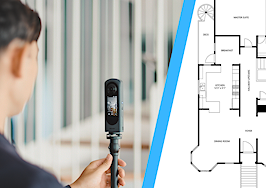Are you receiving Inman’s Agent Edge? Make sure you’re subscribed here.
It’s probably time we put to rest the stigma of real estate agents “always being on their phones,” especially given the rate at which buyers and sellers demand things of you.
Has the inspection been done?
My father wants to see the house before we offer.
Any offers?
Even though a large number of the software products we review at Inman automate most of an agent’s busy work, you remain burdened by the demand for personal communication and the irrefutable truth that consumers want to work with the person who most often answers their phone.
In short, smartphones are critical for success in today’s real estate market, and Apple just released a new one.
The iPhone 14 comes in multiple form factors. There’s the base model, the Plus, the Pro and the Pro Max. The latter two have what you likely saw in the commercials: the Dynamic Island, a dynamic, shape-shifting interface zone to communicate all kinds of native and third-party app alerts, all customizable. It replaces the notch, which people never liked, but managed to succumb to.
The Pro models also have the new A16 chip, whereas the other two come with the A15, still plenty quick.
The new operating system is iOS 16 and it’s facing some much-talked-about bugs summarized here by Forbes. Assuming the patches do their job, the OS lets users customize their lock screen in all kinds of ways, from font types and activity widgets to hierarchically layered alert summaries and app notifications. As with all things Apple, it looks great.
No new smartphone can be released without camera upgrades, which should always be of interest to real estate agents. Apple’s new, 48-megapixel primary, front-facing camera shouldn’t disappoint.
Low-light capabilities have been improved by 2.5x, according to Apple’s website. This is saying a lot, because I’ve captured some incredible night-sky scenes with my iPhone 12’s Night Mode. It’s pretty impressive.
Apparently, the company has upended how its software processes images to make this happen, ensuring those dim living rooms and cloudy exterior shots have a better chance of looking good once on your website. This is a result of the Photonic Engine system.
This new feature is akin to the technology that blends exposures to clean up washed-out exteriors from interior photos. Apple says that “It merges the best pixels from multiple exposures at an earlier stage than ever before. This preserves much more image data to deliver brighter, more lifelike colors and beautifully detailed textures in even lower light.”
I imagine this new phone will make interior 360 captures even better because of the way light varies between rooms as you create a digital twin.
There’s also improved video stability, ideal for capturing walkthroughs, room pans and dynamic marketing content.
The rear-facing cameras — there are three — handle zoom, wide angles and ultra-wide angles, the latter being good for nailing that establishing exterior shot from the curb.
Now, photo quality is important, and so are looks and ergonomics. However, don’t forget the general processing power. We need our phones to run our business apps, lead-gen tools and transactions at the same pace customers need the information.
Apple didn’t make any big jumps in this department, as its newest model comes with the same, A15 Bionic chip that drove the iPhone 13. In other words, you don’t have to worry. It’s fast.
But, perhaps the iPhone 14’s most critical feature for real estate agents is its satellite-based SOS feature, a technology most often found in stand-alone emergency communication tools used by people who spend a lot of time in remote places. This means it doesn’t need a cellular signal to share your whereabouts.
Sure, you may not be showing houses 10 miles up a mountain pass during a February atmospheric river, but let’s not pretend that Verizon and ATT aren’t without their losses of coverage.
This is a pretty incredible add-on, and might be the single driving factor for me buying the iPhone 14. I have emergency wilderness first responder and rescue training, and I’ve used traditional sat-phones. They’re slow, and signals are fleeting.
In every scenario in which you need one, nothing is more critical than what you say once connected to a person. Apple helps with this by asking a few simple but specific questions, sourced from actual emergency response professionals, before attempting to reach a signal, requiring only a tap to respond. It even shrinks the size of the message by three times to require as little bandwidth as possible to send.
Upon connection, Apple sends your answers, location and personal details to the dispatcher, assuming they accept text messages. Most do. (Satellite response protocols work alongside local response organizations.)
Inman has covered agent safety apps and technologies as often as is reasonable, and neither this iPhone nor any app we’ve discussed can outsmart sound personal judgment about who to meet where and when. But if you’re going to be showing property anywhere a signal isn’t, this might be the best damn tool you have in your tech stack.













